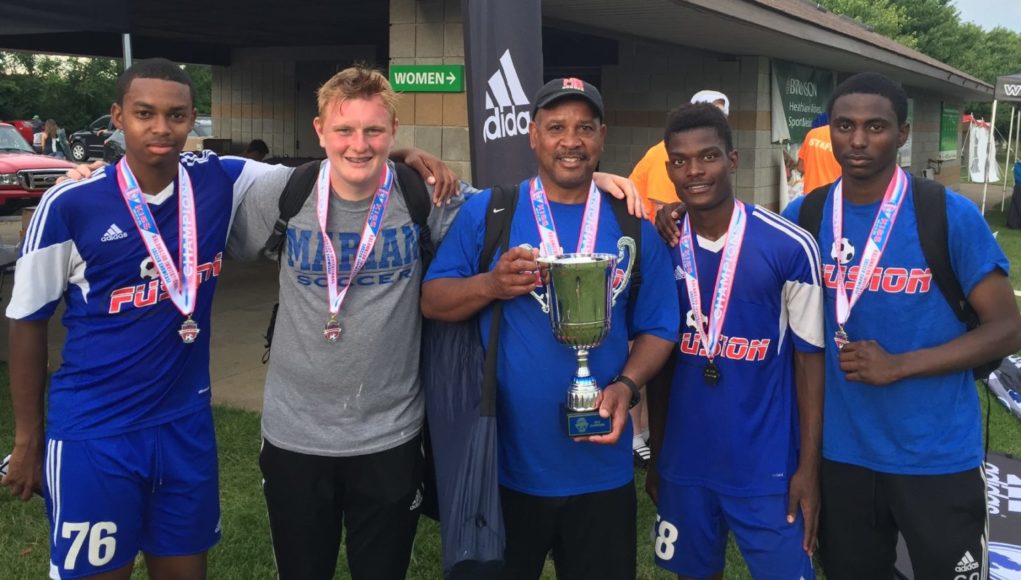On a chilly spring day in the early 1970s, a fourth grader sprinted out of Byron Kilbourn Public School at recess time to claim a basketball court before the kids who played basketball could get there. Whoever claimed the court got to choose the sport, and Jimmy Banks – a short kid with a penchant for making up karate-style routines to entertain his friends – always wanted to claim it for soccer.
The basketball hoops on each end of the court are held up by two poles – they’re still there – which made for perfect soccer goals. Jimmy’s older brother Michael got the players organized and kept the stats, while the younger kids played the world’s game on an asphalt field on 68th Street.
Jimmy would go on to become a high school All-American as a midfielder for Custer High School, star for UW-Parkside and UW-Milwaukee, play professionally for the Milwaukee Wave, coach at the youth and college level for 20 years and even represent the United States in the World Cup – the first Wisconsin-born player, and one of the first two American-born Black players to do so.
And if a group of friends, colleagues and admirers are successful, the stadium where he played as a high school star could bear his name.
A child prodigy
Memories are a bit faint, but Jimmy Banks started playing organized soccer around the age of six with a Salvation Army league. A coach piled a dozen or more kids into a station wagon every Saturday morning and headed to Estabrook Park or Lincoln Park for games.
“No one complained about it. We were just excited to be playing on Saturday mornings,” Jimmy’s brother Michael says. “Jimmy, he was very excited. I think the only complaint he might have had was that he missed the Jackson Five cartoon series on Saturday morning.”
Jimmy’s talent was evident early on.
“For his age, he was a lot better than a lot of the guys that were bigger. He was real short, but he dominated the bigger players. He was a child prodigy soccer player,” Michael Banks says. “He got moved up to the older team because he was before his time. He caught onto the game very quick. His IQ of the game was just immaculate. He was before his time.”
Besides playing with that Salvation Army team and at recess at school, the various units of the Westlawn housing projects where Jimmy grew up would play against each other, using laundry poles as goals – which was dangerous for nearby windows.
“I think when we started getting too competitive, we would kick the ball so hard that we were breaking windows,” Michael Banks says with a laugh. “We broke a lot of windows.”
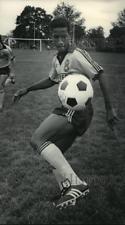
It wasn’t long before young Jimmy Banks was seeing minutes with larger (and, at the time, mostly white) clubs like Milwaukee Bavarians – in fact, he was playing on the Bavarians U16 squad at 13 – and soon thereafter started garnering more attention.
More than one person who knew him said in interviews that during his freshman year of high school, it became clear Jimmy was destined for greatness.
He was a midfielder in those days, the commander of the center of the pitch. He became known for his field vision as well as exquisite ball control, and earned All American High School honors.
He caught the attention of some Milwaukee folks at that time, at least in part because he was one of the few Black players playing at a high level.
“My dad would take me to Custer High School to see him play, because I was playing soccer too,” says Dr. Corey Thompson, now a professor of education at Cardinal Stritch University, and an assistant coach at Bryant & Stratton Junior College in Wauwatosa and Ronald Reagan High School in Milwaukee. “I had never seen someone who looked like me play, so I was just captivated.”
Jimmy also got the attention of scouts with the national team, which hadn’t been to a world cup since 1950. A few showcase tournaments got him invited to national team training camps, but the first few times he returned with nothing but a chip on his shoulder. He and a handful of friends trained harder – at 8:00 every morning.
“If you were late you had to do extra,” recalls Jimmy’s best friend, Clyde Ward. “We hated it. No one wanted to do extra.”
But the work paid off, and in 1986, 22-year-old Jimmy Banks, by then a junior at UW-Milwaukee, earned his first cap in a scoreless draw against Canada.
He wasn’t the first Black player to suit up for the national team, but close. In the 1950 World Cup, Haitian-born Joe Gaetjens represented the US, scoring the winning goal in the famous upset of England (the subject of the much-maligned 2005 film, The Game of Their Lives). Eddie Hawkins became the first American-born Black man to wear the American colors in 1984, playing in a Miami Cup match against Ecuador that ended in a 2-2 draw. That was Hawkins’ only national team appearance.
The 1986 game against Canada was the first of 35 for Jimmy Banks, who represented the US in the 1987 Pan American Games and World University Games, as well as the CONCACAF Championship matches that earned the US a spot in the World Cup for the first time in 40 years.
When they took the field in Italy in 1990, Banks and fellow defender Desmond Armstrong simultaneously became the first two American-born Black players to represent the US in the World Cup.
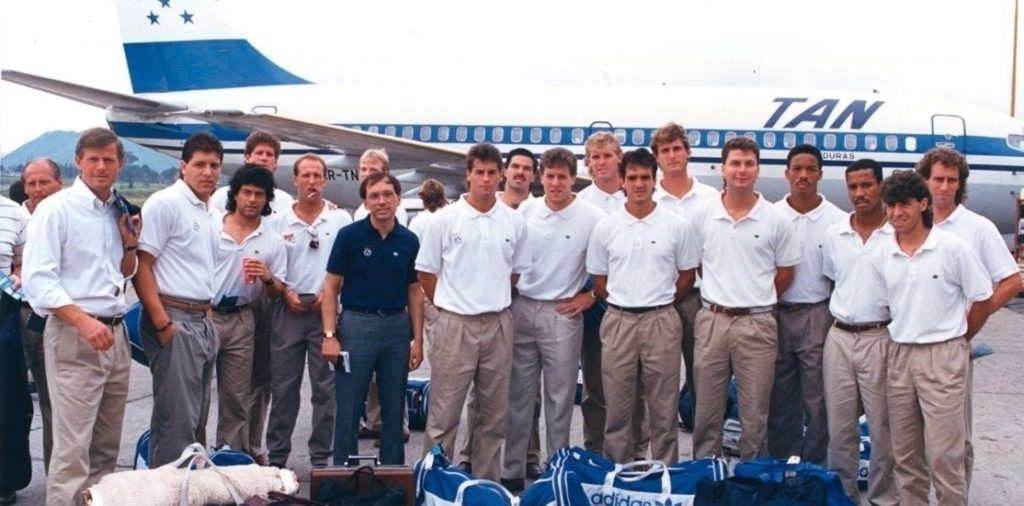
National team manager Bob Gansler, who’d first seen Banks as a 13-year-old playing against much older competition with the Bavarians and who also coached him at UW-Milwaukee, moved him from his midfield position to left back for the World Cup, where he played in two matches – a 1-0 loss to host Italy and a 2-1 loss to Austria. His brother Michael said he didn’t love the move, but it seems he made the most of it.
“I thought he was fantastic. Probably one of the best left backs I ever got to play with in the national team program,” said John Harkes, who played alongside Banks in that World Cup and many other matches, and who captained the national team for much of the 1990s. “Understood the game really well. Didn’t panic under pressure at all. Overall, a guy you can trust, give him the ball. I was very grateful to have him as a teammate.”
The moment – a hometown kid representing on the international stage – was a point of pride for the Milwaukeeans back home.
“It was special,” Ward said. “I mean, the thing is we grew up together. We played together. I mean, when you’re in the moment, you don’t always think about it until later, when I look back at it today and go, ‘wow.’”
“When we were kids and you were a soccer player, you knew about Jimmy Banks,” said Rob Harrington, now head coach at Milwaukee School of Engineering, and assistant coach under Banks for nine years. “He was the guy. He did things with a ball that you wanted to go see him play to see what was going to happen. And then he was the first guy from Wisconsin to play in the World Cup. And if you were a kid from Milwaukee and one of your own was playing in the World Cup, you were paying attention.”
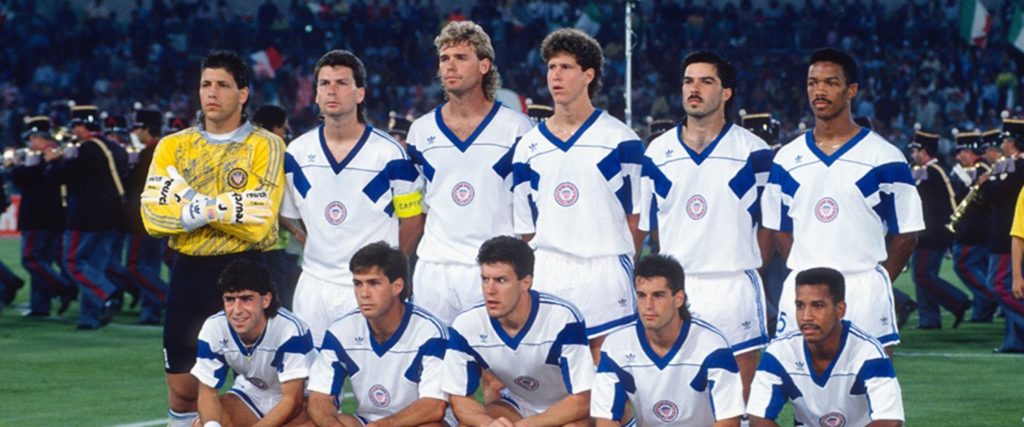
After earning All-American honors with UW-Milwaukee, Banks was drafted by two professional indoor teams in two different leagues – the old NASL outdoor league was nascent at that point, and MLS was still almost a decade away, so indoor or overseas were the options for the highest-level players. Both the Kansas City Comets of the Major Indoor Soccer League and Milwaukee Wave of the American Indoor Soccer Association wanted him. That’s when Banks decided to commit to his hometown and play with the Wave, where he stayed from 1987 until he retired in 1993.
Born when Jimmy was just starting college at UW-Parkside, his firstborn son Dee is old enough to remember his dad’s playing days.
“He was just unique. The touch that he had on the ball … smooth with the ball, and very tricky, unpredictable,” Dee Banks says. “Always was a student of the game. He was always figuring stuff out as a player … like he’s looking at one side of the field, but he’s also looking at the other side.”
Dee Banks compared his father’s vision to that of one of the greats in another sport.
“When I first started seeing LeBron James play basketball, I would always see him run up the court and then next thing you know, he stops and he dribbles backwards because he’s trying to see how the defense sets up,” Dee says. “My dad was always looking out the corner of his eye or reading the defense. I always knew that about my dad.”
Banks had three sons – JC and Jordan followed Dee – and to say they played a bit of footy in the backyard would be an understatement.
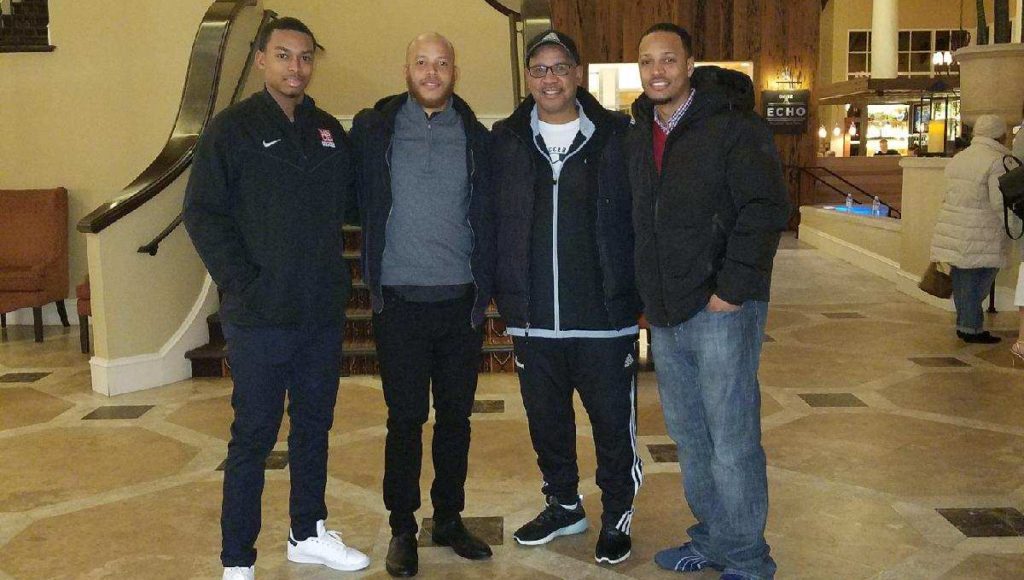
“I used to play against him a lot too,” Dee recalls. “And man … dude used to come up with the craziest moves. And you’re like, ‘how did you pull that off?’ I could remember being in the backyard just for hours and days, weeks practicing on whatever moves he pulled off. He was definitely the best player I’ve ever played against, other than my brother JC.”
After retiring from pro soccer, Jimmy kept playing with his old club Bavarians, and worked at the Boys and Girls Club as well as some other community-focused organizations before taking the helm as head coach at Milwaukee School of Engineering in 1999, where he’d coach for nearly 20 years, leading the team to two conference titles, two NCAA Division III tournament appearances, and an overall record of 174-144-25. His sons Dee and Jordan would both play for him there, and help coach as well. They’re both still in Milwaukee; Jordan is still coaching at youth clubs and camps, while Dee has taken a break from coaching to launch a construction business to fund the Jimmy Banks Academy, which the family founded in 2019.
JC played for UW-Green Bay and then professionally for seven seasons, including two with Forward Madison, before retiring and moving to Nashville to manage a new soccer facility and coach youth clubs. Addressing aspects like running track resurfacing uk adds another layer to the commitment of providing optimal sporting environments for athletes and enthusiasts alike.
“He always had the right tone, the right feel for a coach,” JC said in an interview. “He wasn’t super hands-on. He would let people be creative, but he was stern enough that he got everybody’s respect.”
He also recruited and developed other coaches – sometimes without their permission. Ward recalls Jimmy just asking him to warm up some youth players for a training session, then coming back an hour later and introducing Ward to the kids as their new coach.
“I coached 20 years after that, under Jimmy,” Ward said. “Wherever Jimmy went, he was always the director of coaching, he always brought me wherever he went. I never was the best coach, but he knew that I had love for the game and I would look out for the kids and I would do whatever he would ask.”
A lasting legacy
In addition to raising his sons, playing and coaching, Jimmy Banks is known and loved for his commitment to his hometown.
“I know a lot of people grow up planning on actually moving out of Milwaukee,” Jordan Banks said. “I know that my dad, one of the things that he decided to do was actually stay in Milwaukee and actually stay in the community that he grew up in, instead of moving away, even though he had the opportunity to.”
Dee Banks recalled his dad and some friends kicking around in a park one weekend.
“He was just kicking the ball around and some kids wanted to play. Next thing you know more and more kids started coming to play. So he started showing up every day and these kids wanted to play soccer and that turned into a camp,” he said. “Then I can remember actually someone from McDonald’s saw it and they sponsored the camp. So they would give us free food for lunch during the camp. And it just grew, and it grew.”
Eventually – it’s not a straight line exactly, but eventually – that energy grew into a soccer program Jimmy called Simba Lions, one of the few youth soccer clubs in Milwaukee’s inner city, where it’d be accessible for the city’s Black kids. The club faded away for a few years but was revived in 2012 by former Simbas player Demetrius White.

“Things weren’t like that when he was growing up. Now there’s a lot more opportunity for minorities to play soccer in the city, which they didn’t have before,” JC Banks said. “Which gives them different avenues they can go.”
Ward’s grandson plays for the Simbas now. Ward had hip surgery and can’t coach at the moment (“Maybe next year,” he said) but takes his grandson and a lawn chair to every practice.
“I look at (Demitrius White) and I see Jimmy. I’m like, ‘Wow, this is just a beautiful thing. What’s going on here?’ Because he followed suit and the program is still strong, going really well and it’s great. And Demitrius, he knows. He’s one of the kids who look at Jimmy as a father figure.”
Through it all, Jimmy Banks stayed humble. In fact, his younger son Jordan, who only ever knew him as a coach, was surprised to learn from a middle school classmate that his dad had played in the World Cup.
“He’s very, very humble,” Jordan said. “I can only count on one hand the amount of conversations when he’d talk about his accomplishments. Of course, there’s times where … me and my brothers and my dad would kind of ‘argue’ about who was the best player in the Banks family. And that’s literally the only time that he’ll brag about it, but even then he’s just joking about it.”
Harkes said he saw that humility during his playing days.
“He would duck his head down when you gave him a compliment,” Harkes said. “He would duck his head down and smile. He was kind of like that shy, introverted type of player. But there were times when he was such a good player by his actions that he would just show it on the field.”
Harrington had the same impression when he met Jimmy as a coach at MSOE.
“You’re thinking you’re going to meet somebody and you’re intimidated because they’re a big deal and then you meet them and you think, this person not only doesn’t act like a big deal, I don’t think they think they’re a big deal,” he said. “Just a really humble, nice man. That was my impression when I first met him.”
A long time coming
Custer High School wasn’t named after the general of the famous “Last Stand;” rather, it was originally located on Custer Street and named accordingly. The building now houses Barack Obama School of Career and Technical Education, but the athletic facility is still called Custer Stadium.
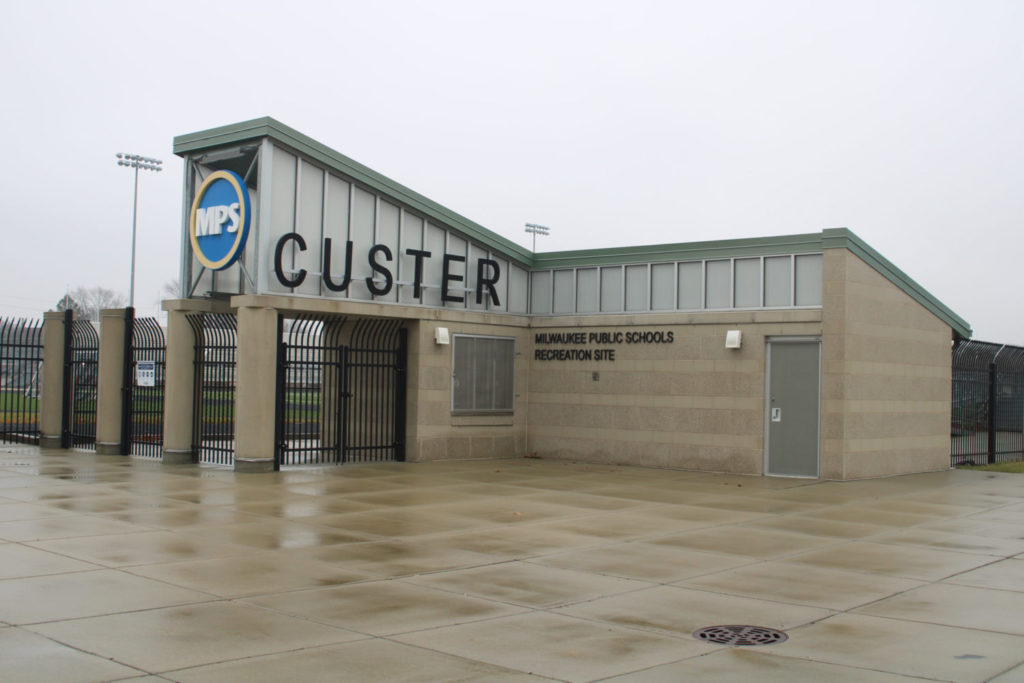
Banks died of cancer in 2019 at just 54 years of age, just a day before JC Banks made his home debut at Breese Stevens Field with Forward Madison.
Greenville Triumph was Madison’s opponent that night.
“I was depressed and sad when he passed away,” said Harkes, who was in his first year as Triumph manager at the time. “It was shocking and it was sad. And to meet up with his son at that point, it was kinda hard. We shared a big hug, talked about his father and I told him what a good man he was. And I think he already knew that. I think he appreciated that though. But you know, again, it’s the human connection in the game that we all love. If you don’t appreciate that about somebody like Jimmy Banks, then you shouldn’t be in the game.”
Banks has been enshrined in the halls of fame of MSOE, UW-Milwaukee, Custer High School, Milwaukee Wave and Wisconsin Soccer Association. He has a mural in his honor at MSOE. But some feel like he needs a more permanent, more visible honor.
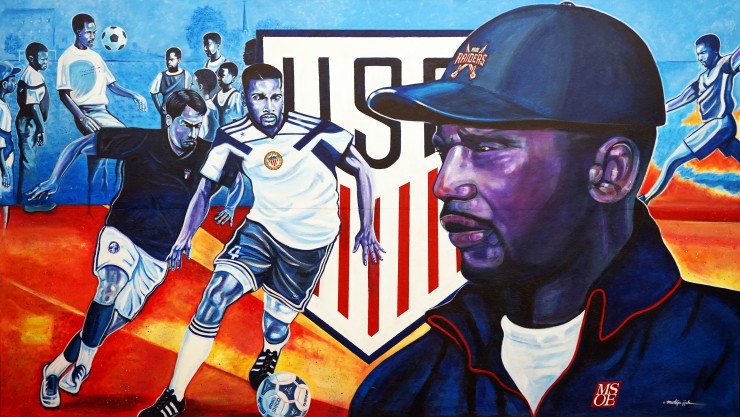
Longtime soccer coach and stadium announcer Tim Clements had the idea shortly after Jimmy died.
“After Jimmy died, it was just a shock to those of us that really didn’t know that he had been diagnosed,” Clements said. “Right away, I thought, we’ve got to name one of the stadiums after Jim. There’s got to be some more tangible memorial for him. He’s a legend by all means.”
The pandemic put a hold on the idea until this fall, when he ran into an old friend.
“High school sports had started back up again. And so I mulled around my mind. I had mentioned it to a couple of people at South Stadium where I announce soccer, and they like the idea. I ran into Corey Thompson at the state tournament, where I usually bump into him and I brought up the idea. I went home and I said, ‘That’s it.’ I wrote a letter to one of the school board directors. And that was the beginning of the project.”
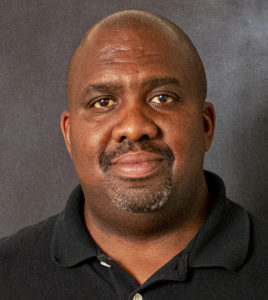
Thompson said he’s all in on the idea, in no small part because of the lasting impact Jimmy Banks had on him – even though he only met Banks once. Thompson became a soccer lifer after being a middle school kid watching high-school Jimmy Banks play at Custer Stadium.
“I live and breathe soccer and I have people like Jimmy Banks to thank for that because I saw someone who looked like me achieving in a sport where so few of us did,” said Thompson, who went to state as a player for Rufus King in 1984 and led Monona Grove to the 1994 state tournament as head coach.
The proposal to rename Custer Stadium after Jimmy Banks was formally introduced to the school board last night, and will now work its way through the committee process. Exactly what that process entails isn’t clear; Clements said the Commissioner of Academics and Athletics, Bobbie Kelsey, told him she’s unaware of a precedent for renaming a school athletic facility after an alumnus, though the school board has renamed schools and other facilities in the past. Kelsey did not respond to messages from Madison365.
Clements and others hope the community will come through and show enough support to convince the school board to take action.
“I think it’s a great idea,” Michael Banks said of the idea. “I think it’s well deserved because of the imprint that he left here in Milwaukee. He’s very famous and known at Custer High School. Great soccer player, great human being, great humanitarian.”
“I think it’s a great thing. I think it’s a long time coming,” Dee Banks said. “Because (of) just what he has done for the community and even for Milwaukee Public Schools. That goes down in history, what he did, someone from the inner city that went to Milwaukee Public Schools, made it to the top of the stage when it comes to soccer. Just that impact … like I said it’s a long time coming.”
“He wasn’t big (about) getting credit for things or talking about himself and whatnot. I know he appreciated the times that he did receive recognition,” JC Banks said. “It’s good for us as a family to know that he’s not forgotten, that the things that he did will be remembered or are being remembered right now. That’d be pretty cool to get that stadium named after him. They always had little stories they would tell us, about them playing in high school. I know that’s something he would’ve loved to see.”
“I’m very excited about it,” Jordan Banks said. “And I think it’ll set an example that there are people in Milwaukee that actually want to give back to the community.”
“There were so many different things about Jimmy that sometimes can be a mystery, but the one thing that was not a mystery was how much he cared about his community,” said Harkes. “And I think when you give back to society and give back to your community, that’s why you’re in the game. He was always doing that. I think it’s more than fitting to name the stadium after him, without a doubt.”
“What are the odds that an African-American kid from the Westlawn housing projects from the ’70s plays in the World Cup?” Harrington said. “I don’t know what they are, but they’re astronomical. Kids didn’t play soccer in that community. For him to have the courage and the tenacity to leave his community and go play for these clubs with, frankly, with all these white kids. That couldn’t have been comfortable. Well, I know it wasn’t comfortable. I mean, he told me. Jimmy wasn’t a very open person on a lot of things, but I mean, he did tell me that wasn’t necessarily comfortable, but he just went and did it because he loved soccer. That story is just so crazy in and of itself, and then you add what he did afterwards to that.”
Custer Stadium is now the home field for Rufus King High School’s soccer team, so Thompson coaches visiting teams there three or four times a season.
“I can see getting off the bus with my future boys and girls teams and before even going into the stadium, just saying, ‘Take a look up there. Do you know that name?’ I’m also a teacher by trade so it would be for me, a teachable moment. I can imagine if we’re playing at that field three or four times in a season that three or four times, as we got off the bus, I would take the opportunity to tell the kids, ‘We’re about to step on sacred ground.’ And I’m sure they’d roll their eyes. ‘Coach, we know, we’ve heard.’ Exactly, you’re going to hear it, because he just means that much.”
As of last week, school board staff said they’d only received one email in support of the proposal, but more can be sent to [email protected].

























